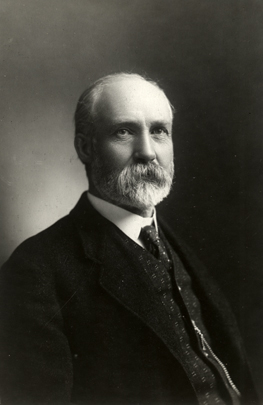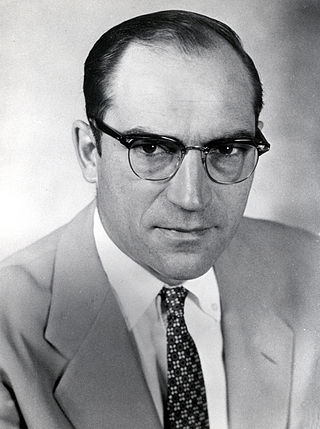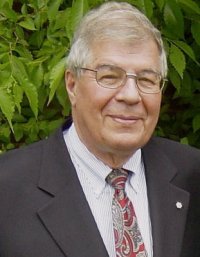
The Snowball Earth is a geohistorical hypothesis that proposes during one or more of Earth's icehouse climates, the planet's surface became entirely or nearly entirely frozen with no liquid oceanic or surface water exposed to the atmosphere. The most academically referred period of such global glaciation is believed to have occurred sometime before 650 mya during the Cryogenian period.

Richard Alexander Fullerton Penrose Jr., better known throughout his career as R. A. F. Penrose Jr., was an American mining geologist and entrepreneur.

The Cryogenian is a geologic period that lasted from 720 to 635 million years ago. It forms the second geologic period of the Neoproterozoic Era, preceded by the Tonian Period and followed by the Ediacaran.

The Geological Society of America (GSA) is a nonprofit organization dedicated to the advancement of the geosciences.

Reginald Aldworth Daly was a Canadian geologist.
Robert Ferguson Legget was a civil engineer, historian and non-fiction writer. He is internationally known for his contributions to engineering, geology and building research and standardization. He is credited with the establishment of co-operation among Canadian geotechnical engineers, geologists and pedologists.

Arthur Philemon Coleman was a Canadian geologist and academic.
Daniel Paul Schrag is the Sturgis Hooper Professor of Geology, Professor of Environmental Science and Engineering at Harvard University and Director of the Harvard University Center for the Environment. He also co-directs the Science, Technology and Public Policy Program at the Belfer Center for Science and International Affairs at the Harvard University Harvard Kennedy School. He is also an external professor at the Santa Fe Institute.

Luna Bergere Leopold was a leading U.S. geomorphologist and hydrologist, and son of Aldo Leopold. He received a B.S. in civil engineering from the University of Wisconsin in 1936; an M.S. in physics-meteorology from the University of California, Los Angeles in 1944; and a Ph.D. in geology from Harvard University in 1950.

Waldemar Lindgren was a Swedish-American geologist and a founder of modern economic geology.

Raymond Alexander Price, is a Canadian geologist. He has used his research on the structure and tectonics of North America’s lithosphere to produce extensive geological maps. He has also provided guidance for nuclear fuel waste disposal and reports on the human contribution to Global warming.

Albert Francis Birch was an American geophysicist. He is considered one of the founders of solid Earth geophysics. He is also known for his part in the atomic bombing of Hiroshima and Nagasaki.
Michael Manga is a Canadian-American geoscientist who is currently a professor at the University of California, Berkeley.
The Marinoan glaciation, sometimes also known as the Varanger glaciation, was a period of worldwide glaciation. Its beginning is poorly constrained, but occurred no earlier than 654.5 Ma. It ended approximately 632.3 ± 5.9 Ma during the Cryogenian period. This glaciation possibly covered the entire planet, in an event called the Snowball Earth. The end of the glaciation was caused by volcanic release of carbon dioxide and dissolution of gas hydrates and might have been hastened by the release of methane from equatorial permafrost.
The Sturtian glaciation was a worldwide glaciation during the Cryogenian Period when the Earth experienced repeated large-scale glaciations. As of January 2023, the Sturtian glaciation is thought to have lasted from c. 717 Ma to c. 660 Ma, a time span of approximately 57 million years. It is hypothesised to have been a Snowball Earth event, or contrastingly multiple regional glaciations, and is the longest and most severe known glacial event preserved in the geologic record, after the much earlier Huronian glaciation.
Stanley Awramik is an American biogeologist and paleontologist. He is best known for his work related to the Precambrian. In 2013, he was inducted as a fellow of the Geological Society of America.
Laurence L. Sloss was an American geologist. He taught geology at Northwestern University from 1947 until his retirement in 1981.
Edward Wesley Hildreth III, is an American field geologist and volcanologist employed by the United States Geological Survey (USGS). He is a fellow of both the Geological Society of America (GSA), and the American Geophysical Union (AGU). Hildreth was described as "one of the great volcanologists/petrologists of our time" in the magazine Wired.









